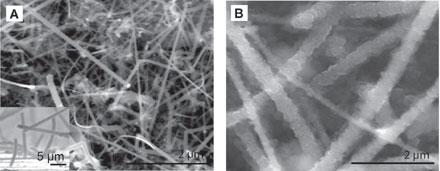Breakthrough promises 40-hour laptop batteries

Stanford researchers have made a discovery that could signal the arrival of laptop batteries that last more than a day on a single charge.
The researchers have found a way to use silicon nanowires to give rechargeable Lithium-ion (Li-Ion) batteries used in laptops, iPods, video cameras and mobile phones as much as 10 times more charge, potentially giving a conventional Li-Ion battery-powered laptop 40 hours of battery life rather than four.
The new Li-ion batteries were developed by assistant professor Yi Cui and colleges at Stanford University's Materials Science and Engineering Department. "It's not a small improvement," Cui said. "It's a revolutionary development."
Citing their paper published in Nature Nanotechnology, Cui said the increased Li-Ion battery capacity was made possible though a new type of anode that utilises silicon nanowires. Traditional Li-Ion batteries use graphite as the anode, which limits the amount of lithium -- which holds the charge -- that can be held in the anode, and therefore limits battery life.
Silicon anodes have the "the highest theoretical charge capacity" according to Ciu's paper, but expand when charging and shrink during use: a cycle which causes the silicon to pulverize and so degrading the performance of the battery. This dead end stumped researchers for 30 years, who instead poured their energy into improving graphite based anodes in an effort to expand battery life.
Cui and his colleagues took up this old problem and overcame it, by constructing a new type of silicon nanowire anode. In Cui's anode, the lithium is stored in a forest of tiny silicon nanowires, each with a diameter one-thousandth the thickness of a sheet of paper. The nanowires inflate to four times their normal size as they soak up lithium but, unlike previous silicon anodes, they do not fracture.

Scanning Electron Microscope images of pristine silicon nanowires before (A) and after (B) electrochemical cycling (charging).
Credit: Nature Nanotechnology
Cui said there a few barriers to commercialising the technology: "We are working on scaling up, and evaluating the cost of our technology. There are no roadblocks for either of these."
Cui has filed a patent on the technology, and is considering formation of a company or an agreement with a battery manufacturer and expects the battery to be commercialised and available within "several years", pending testing.